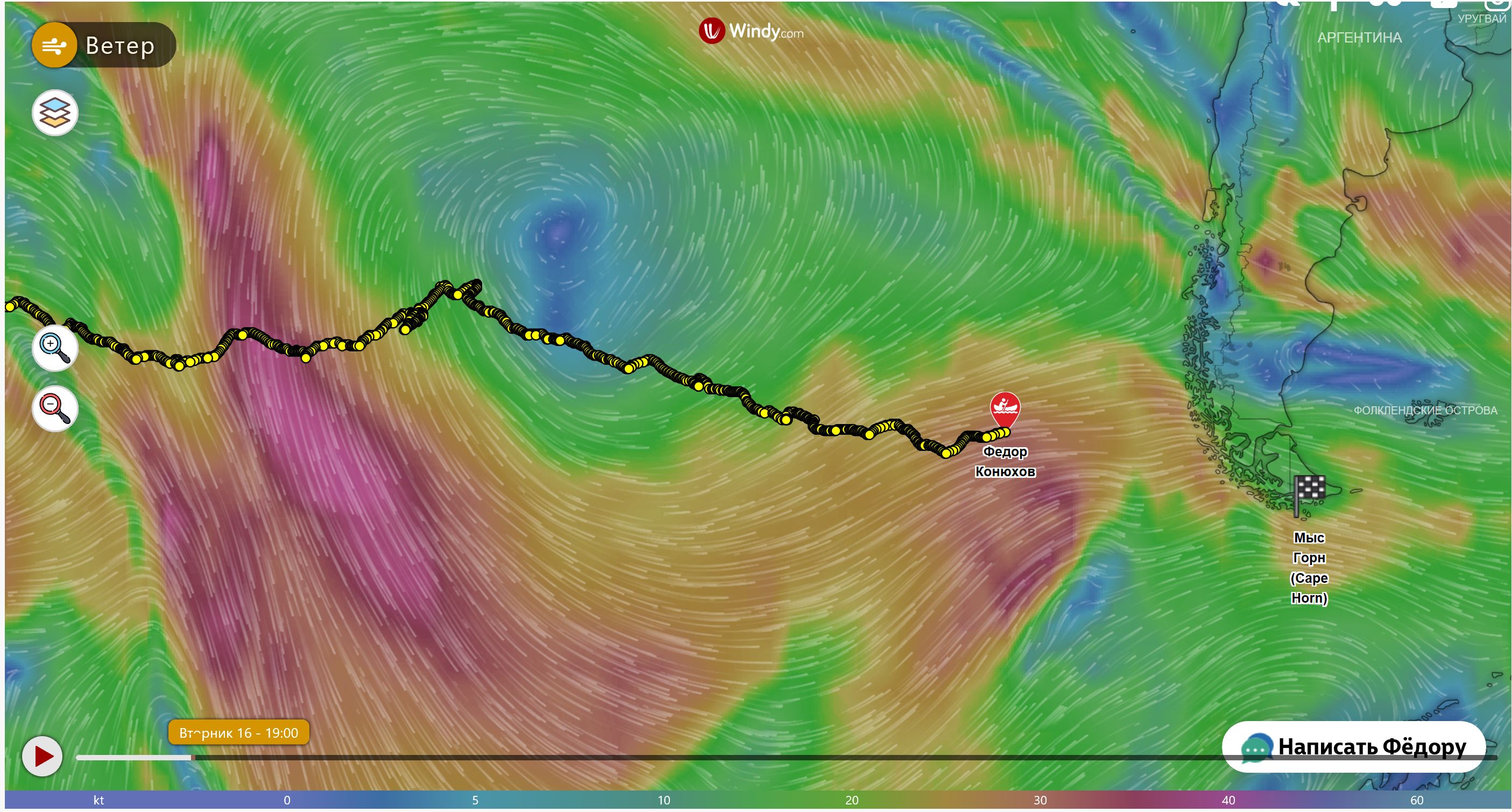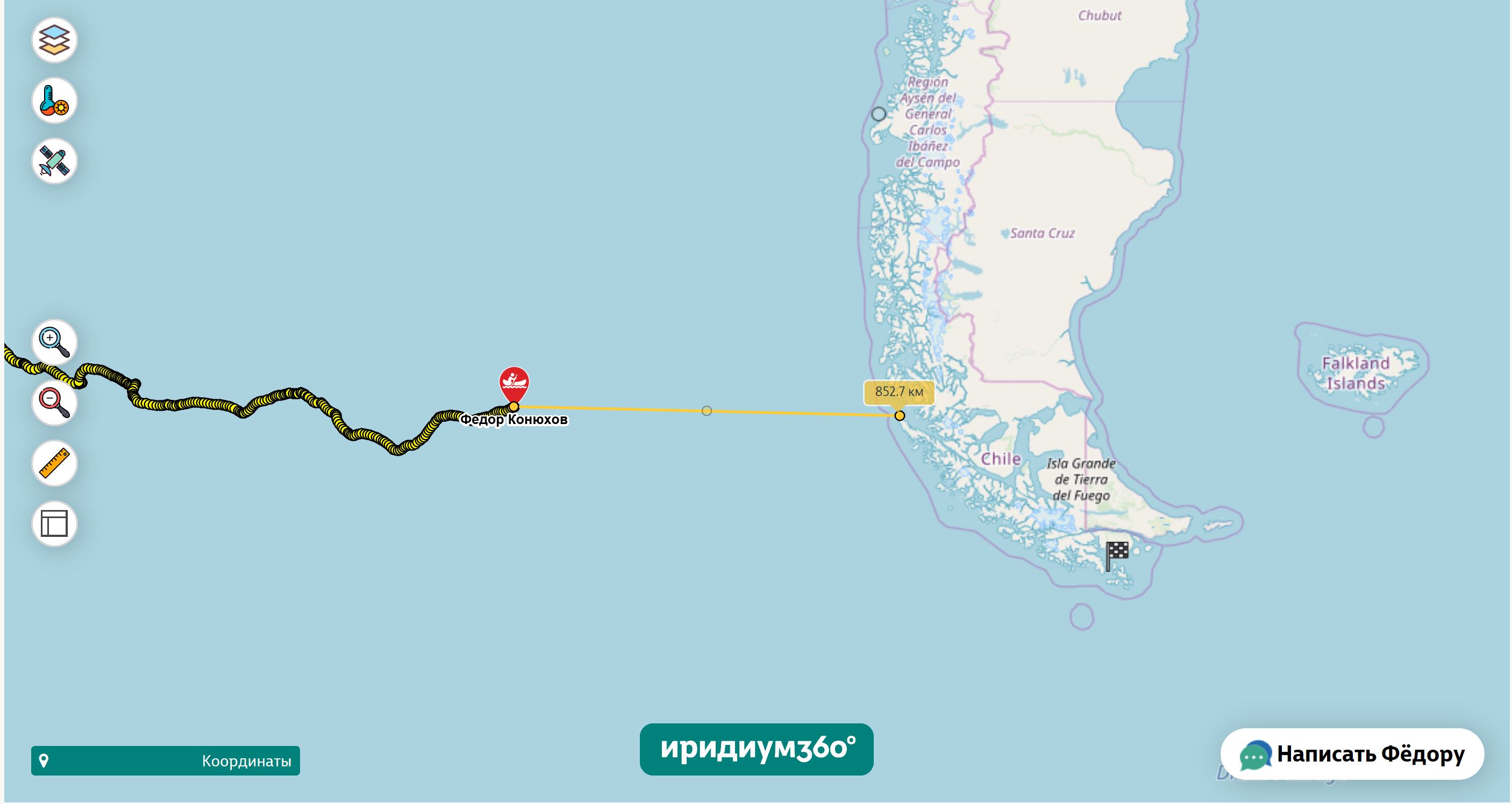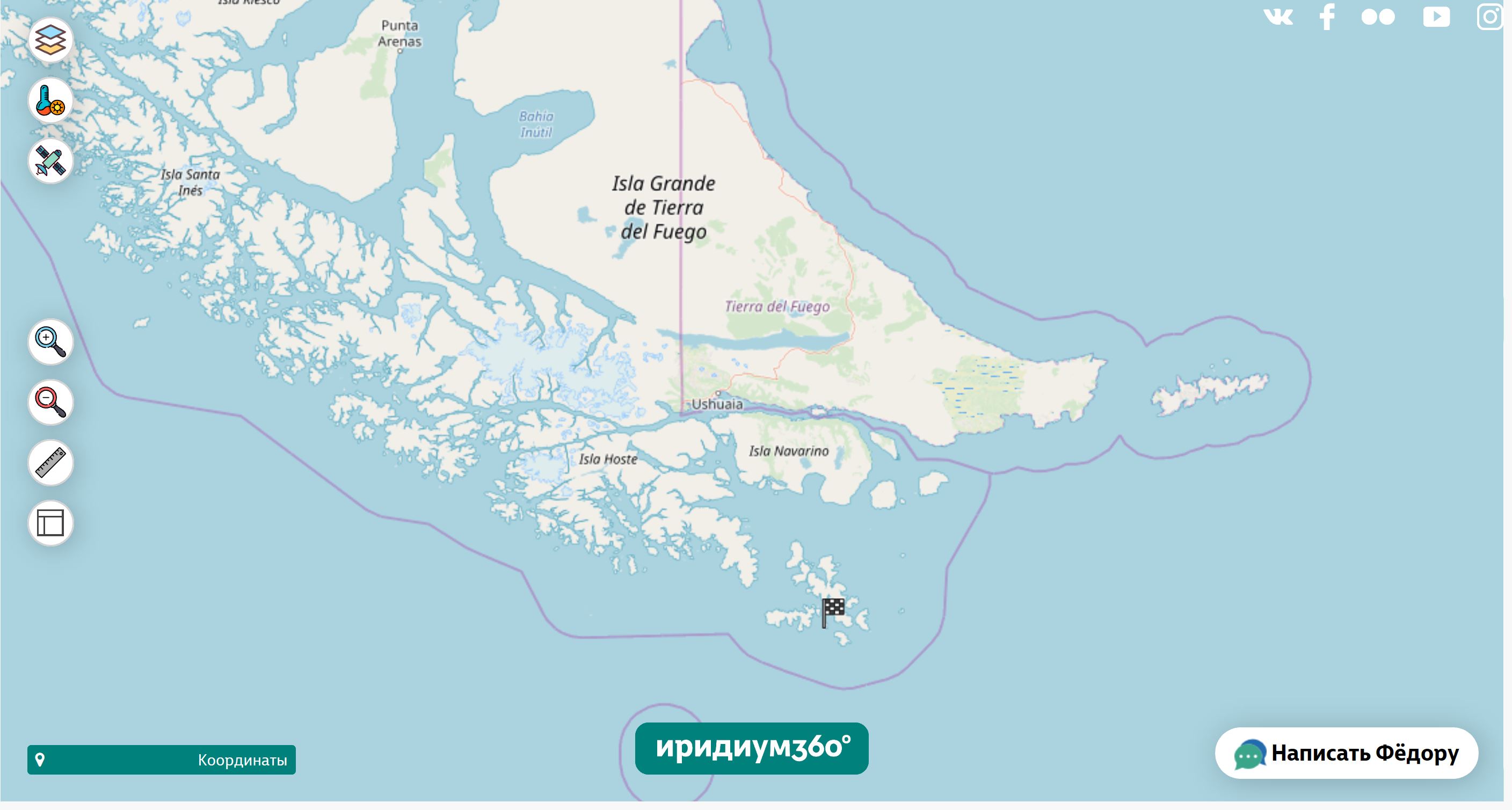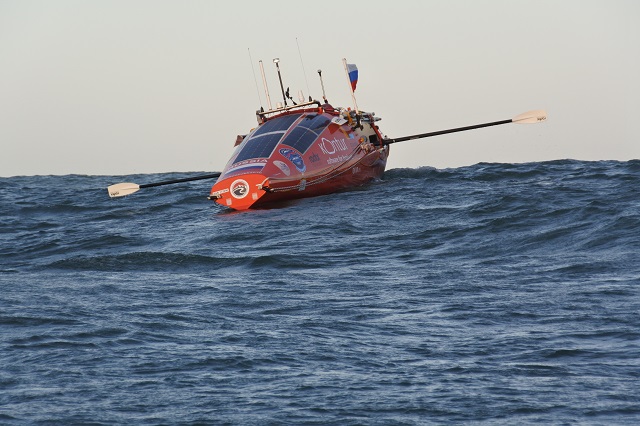Day 131. 10,000 kilometres since the starting point
So today we have a nice, big round number – Fedor have rowed for 10,000 kilometres in total since the starting point at the New Zealand port city of Dunedin. This distance would cover the whole of Russia from Saint Petersburg to Vladivostok.
The area is now under the influence of a stable and powerful anticyclone, which borders from the 130th longitude (the centre of the ocean) to the 70 degrees West (the Andes mountain range).
An anticyclone is better than a cyclone, but the vortex is funnelling cold air from Antarctica to Chile. Fedor is in the Eastern quadrant of the anticyclone, where the wind speed is 25-50 knots. The weather is relatively good, but the wind is coming from 230-250 degrees and preventing Fedor from travelling along his course. The boat is travelling at 60-65 degrees course, but needs to be at 115 degrees to enter the region of Cape Horn.
Right now, the rowboat “AKROS” is at the same latitude as the Western gates of the Strait of Magellan (the Pacific entrance to the Strait). Travelling directly East at this latitude for 850 kilometres would take him into the Strait; a historic achievement which would mark the first crossing of the South Pacific Ocean in a rowboat. But this monumental task is worth the maximum effort of trying to enter the region of Cape Horn. For this, Fedor still needs to travel 4 degrees (240 nautical miles) to the South.
The wind will continue coming from this inconvenient direction until the end of the week, but next week promises a stable North-Westerly winds. Its Northerly direction means there will be a chance to draw nearer to Cape Horn, but the team is exploring all possible options for meeting Fedor aboard the “AKROS”.
The primary option is to set out from the Port of Ushuaia and head East and then South-West toward Cape Horn and await Fedor at the leeward side of the island, under the cover of Horn Island.
Plan B is to go straight to the Pacific Ocean via the Beagle canal to the West, and to await Fedor’s boat on the Western shores of Chile. This will be the option in the event that Fedor cannot enter the Drake Passage.
The project team has chartered two expeditionary yachts, the Australis and the Sarah W. Vorwerk to intercept and escort the “AKROS”.
The owners of these yachts are experienced sailors, with more than ten seasons in the Southern Ocean behind each of them, as well as expeditions to Antarctica, South Georgia, and of course, Cape Horn. The Russian yacht, the “Lady Mary”, whose home port is Moscow, is also docked at Port Ushuaia! The Russian family of Klochkovs are on board, circumnavigating the world together. Details can be found here.
Having found out that their fellow countryman Fedor Konyukhov is heading to Cape Horn on his rowboat, they have decided to wait for his arrival, and are planning to head out to meet him as part of the welcome flotilla. Where else should the Russian travellers meet, but at Ushuaia – Fin Del Mundo; the Edge of the World!
A message from Fedor Konyukhov:
“I have finally been able to start the desalination unit and pumped water into three canisters. The boat is being tossed around on the waves and the watermaker roars every time it sucks in air. Three canisters (5 litres each) should last me a week, plus I have my emergency reserve, of which I sometimes use 10-20% during storms, when I can’t start the watermaker. By my calculations, there should be enough water in the emergency reserve to last until I reach dry land, even if the watermaker fails. But I have no desire to use the reserved water stored in the bottom of the boat in canisters, as it also acts as a ballast, especially in stormy weather. It weighs down the stern and stabilises the boat, preventing it from capsizing.
The ocean is booming, and there is a light drizzle. Even in an anticyclone, it rains here. I can see on the screen of the onboard computer (chart plotter) the Chilean coast! Hooray! For me, this is a huge source of joy. I have been staring for 100 days at a dot (my boat) on a blue screen. New Zealand remained to the West, beyond the borders of the screen, and the Chilean coast did not appear on the monitor for 100 days. Now I can see the Chilean coast, and with every day it grows closer and crawls across the onboard computer screen. The wind is South-Westerly and cold. The temperature outside is +5. Unfortunately, I can’t turn on the heating in the cabin. There isn’t enough power. The remaining solar panels barely keep the navigational equipment running. And it is cold here, the batteries are at the bottom of the boat and the water is cold. It is annoying that the battery compartment has a special heating system: a metal panel with heating elements like floor heating. We had counted on the heating element acting as an insulator which keeps the batteries warm, increasing their efficiency, but I can’t use it. As soon as I turn it on, I can see the batteries’ charge falling before my eyes. The engineers from the company Rannoch Adventure Mark Wood and Gary Scroggs spent a lot of time developing the system and I can’t use it now, when I need it most. Losing part of the solar panels has really affected the energy balance. Prior to capsizing, I didn’t have any problem charging the batteries, and now I must constantly monitor the on-board power supply. I must be especially economical at night and during storms. I have to turn off some of the devices on board in order to maintain a positive energy balance. More than anything else I save energy on not heating the cabin or battery compartment and don’t turn on the light, using instead a head-mounted flashlight, for which I thankfully have enough batteries.
But it’s okay, thank God I am alive and well. I have 10,000 kilometres behind me, and there is 1,300 kilometres or 722 nautical miles to Cape Horn.
Greetings to all”.
52’30 south
87’15 west



